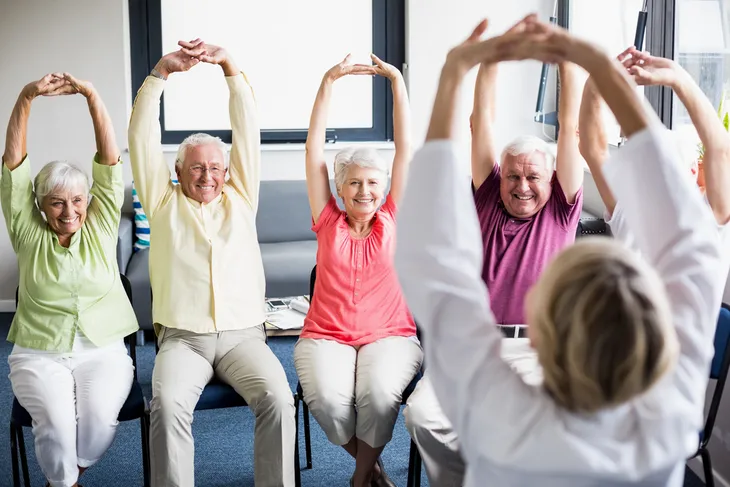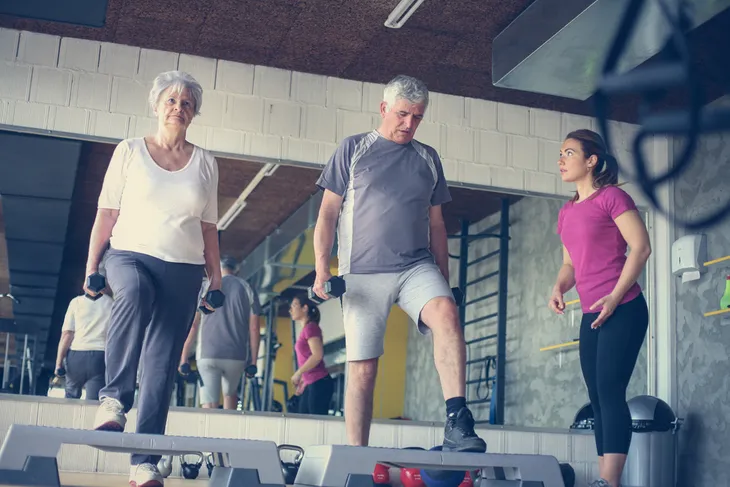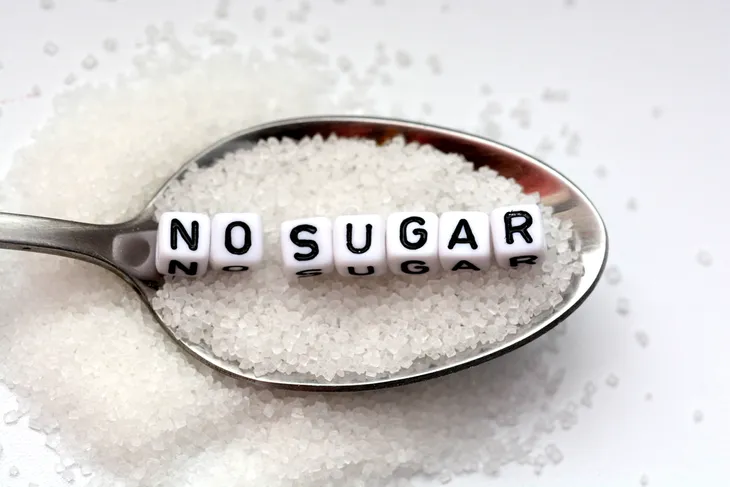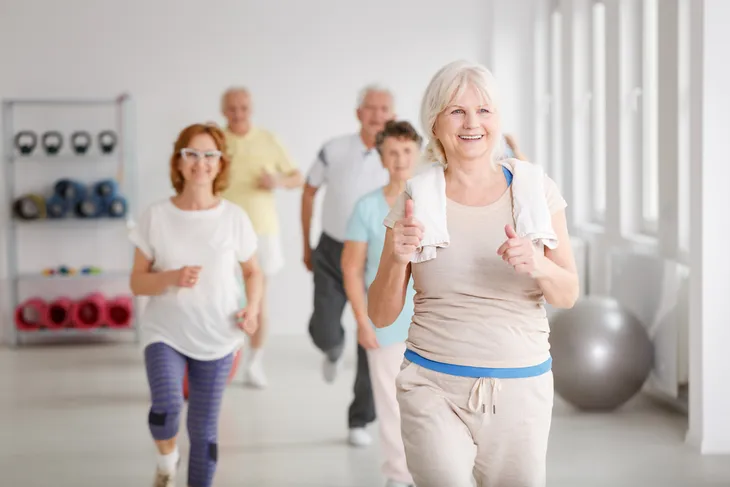If we were to believe what we see in the movies and on TV, life practically ends after the age of 30. The reality is that our global population is aging and, according to the UN Population Division, by 2035, 1 in 5 people will be 65-years of age or older. For most, the expectations of aging include the ability to maintain mobility, be injury and illness free, and stay in our homes until the ripe old age of 100. So what are the steps we can take to ensure this is a reality and not just a pipe dream?
The following 10 tips will not only ease one into the aging process without too much shock, but also help to decrease the risk of chronic disease, injury, and may even lead us into our 90’s drama free, independent (and still looking relatively radiant in the process)…
Want senior content delivered straight to your inbox? Sign up for our exclusive email list and receive articles and news on diet & nutrition, fitness, and mental health dedicated specifically to our senior audience!
Tip 1: Sleep
It is a myth that the older we get the less sleep we need. However, as we age it is harder to get the sleep we need. From hormonal shifts to increases in stress, most people over 40 aren’t getting closed to the prescribed 7- to 8-hours of uninterrupted sleep a night they need for good health.
As hard as it is to get, sleep is one of the most important health-protecting behaviors above all else. Moreover, chronic sleeplessness can lead to mental health issues including depression and physical issues, including chronic disease. If sleep is a challenge, it may be a good time to consult a sleep expert or try making simple changes at home including turning off the screen an hour before bed, taking a hot bath or shower, or creating a relaxing environment in the bedroom.
Tip 2: Stretch
Being inflexible can be blamed for a myriad of injuries and health issues including chronic back pain, muscle strain, and falls. The fact is, if we don’t use our muscles in activity we will lose our muscles to atrophy.
The good news is flexibility can be increased at any age, any place, at any time. Don’t have time to stretch? Think stretching is boring and unnecessary? Try turning on a favourite TV show or movie and stretching in front of it. All it takes is a few minutes a day to see gains in muscle length and mobility.
Tip 3: Get Moving
Physical activity can reverse many age-related changes we may start noticing over the age of 40. A daily walk can reduce blood pressure, heart rate, increase lung capacity, and strengthen the immune system to help reduce the number of colds and flus we get per year.
Physical activity can keep depression at bay and even treat mild to moderate depression without the aid of an antidepressant. It can reduce wrinkles by keeping the skin oxygenated and even keep us looking great in our jeans. If the benefits of physical activity could be packaged into a pill, it would be the most sought after medication in the world (and that includes Viagra)!
Tip 4: Healthy Nutrition
Nutritional scientists continue learning about the mental and physical benefits of nutrition. Currently, research is strongly suggests a positive relationship between healthy nutrition and a healthy aging process. Bradley Wilcox, MD, co-author of The Okinawa Diet Plan, is a professor of geriatrics at the University of Hawaii and suggests a healthy diet should include fruits, vegetables, and legumes to get all the antioxidants we need to reduce the cellular effects of aging.
These antioxidants can help delay the aging process by fighting again the cell damage caused by free radicals produced by normal metabolism and external sources such as pollution, smoking, and UV rays from the sun. By including vegetables of all colours into our nutritional plan we are ensuring we receive a wide variety of nutrients necessary for good health and happy aging.
Tip 5: Reduce Sugar
According to the United States Department of Agriculture, the average American consumes 150- to 170-pounds of sugar each year. Although one may think it would take a simple change in diet to eat less sugar, sugar is now found in the most unlikely places. From sauces and ketchups to yogurt and packaged meats, one must be diligent in reading the ingredients list to identity where the sugar is hiding.
Since the 1980’s North America’s sugar intake has slowly increased, and with it, so has chronic disease. From an increase rate in heart disease, diabetes, Alzheimer’s disease, and cancers there appears to be a relationship between the two. Sugar has been linked to inflammation which has been related to many chronic diseases such as certain cancers, diabetes, and arthritis. Dr. Nancy Appleton, an author in nutritional science, notes that eating as little as 2-teaspoons of sugar can cause an imbalance in the body chemistry enough to invite disease. If that isn’t enough to turn off our sweet-tooth and reduce our sugar intake, perhaps knowing that a diet high sugar can leave our skin dull and wrinkled before its’ time will be what it takes.
Tip 6: Practice Injury Reduction
It goes without saying, wearing a seatbelt while driving and helmet while biking reduces our chances of injury. Although these are a good start, injury reduction goes beyond that as we move into our middle age years. It may include exercises like balancing and core stability, maintaining flexible muscles, and paying attention to the importance of rest.
Keep in mind, movement and mobility at 80-years old is much different than it is at 40. The key to keeping as mobile and pain free as possible in our 80s and even 90s is to pay attention to those exercises that keep us limber and stable. With daily stretching and balancing exercises, our muscles will remain flexible and our joints stable enough to overcome a sudden trip on the pavement.
Tip 7: You’re Not as Young as You Feel
The mistake many make is starting an exercise or sport program where we left off…20-years ago. Although we may still feel young, our body has aged. When getting back to exercise, it is important to start at the beginning working our way to increases in strength, stamina, and ability.
Although our muscles have memory and the activity may not be as hard to pick up the second time around, they have weakened and need some time to gain what they lost. The good news is age is not a factor in strength and flexibility gains it just may take a little more time.
Tip 8: Exercise is Not a Weight Loss Tool
Although, in our youth, we may have used a heavy bout of exercise to get “beach body ready”, we cannot expect the same results as we move past the age of 40. Other factors such as hormonal shifts, increased stress, and sleeplessness (just to name a few) may play a role in holding onto the pounds in both men and women.
Eric Ravussin, a professor at the Pennington Biomedical Research Center in Baton Rouge, Louisiana, states that exercise is “pretty useless” when used as a weight loss tool. Generally speaking, exercisers will consume more calories than they burn or eat more as a result of working out. Another study out of Harvard University followed 34,000 female participants over a 13-year period and found that those who gained the less amount of weight over time exercised every day. All participants gained weight as they aged, but those working out moderately for about one hour a day appeared to have gained the lowest amount of weight.
Although the news appears bad, do not despair. Exercise may not lead to weight loss as we age, but a combination of exercise and a healthy diet might. Of course one must factor in other causes of weight maintenance and gain including chronic stress, mental illness, lack of sleep, and injuries. No matter what the weight loss or gain, we can be assured that if we enjoy a lifelong exercise regime coupled with healthy nutrition we will enjoy the benefits of increased energy and decreased chronic disease!
Tip 9: Accept that Aging is Inevitable
It doesn’t seem fair that as wisdom comes with age so does wrinkles, incontinence, and hair loss…but it does beat the alternative. Many of us fight age to the death (literally) through plastic surgery, over exercise, expensive anti-aging products, and unhealthy diets only to result in disappointment and an empty bank account.
Acceptance is the key to a healthy and happy aging process but that doesn’t mean one has to accept the weight gain or lack of energy. There are many healthy ways to change one’s lifestyle through diet, sleep, and physical activity that may keep what we have as long as we can. A famous Anonymous quote once stated, “Youth is an act of nature; age is a work of art”.
Tip 10: Practice Gratitude
It’s easy to get mired down in the negative thoughts of our aging process. It is probably not uncommon for many of us to peer into the morning mirror and wonder who is looking back at us. It is at this time that practicing gratitude is the most important to help shift our focus on the positive things in our lives.
Emmons and McCullough, in 2003, found that people who wrote in a gratitude journal every week exercised more regularly and reported feeling better about their lives in addition to experiencing fewer physical symptoms. Another application of gratitude is as simple as listing as many things we are grateful for while driving to work, waiting in the coffee line-up, or before we go to sleep. Take the challenge and practice daily gratitude for one month. The results may be pleasantly surprising.













